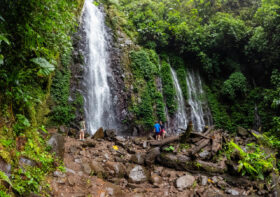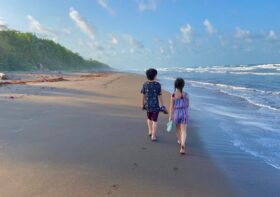Bioluminescence tour with Bahia Rica – Costa Rica adventures
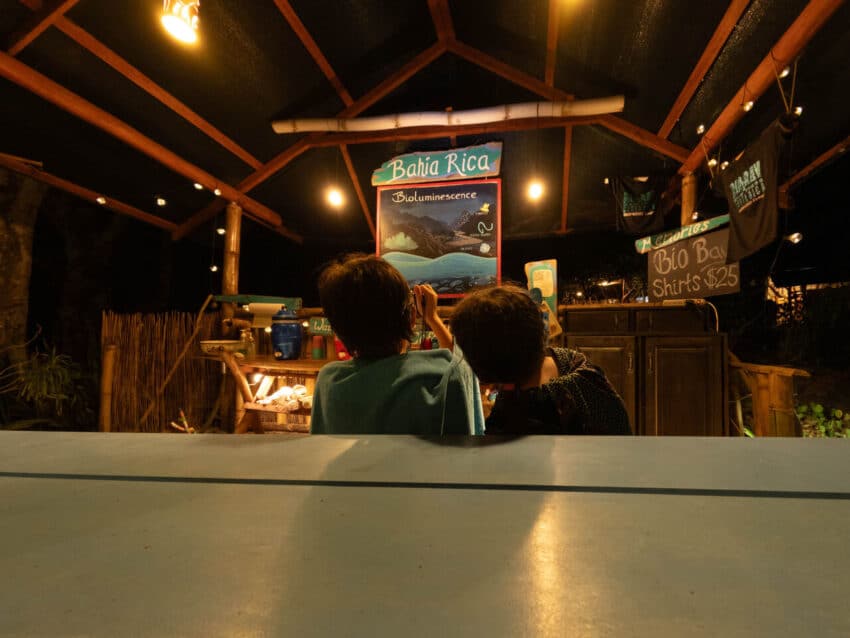
Did you know you can see bioluminescent beaches in Costa Rica??? YEAR ROUND. I had no idea, until I stumbled upon a random website while planning our Costa Rica itinerary. This was not even on my radar, but immediately became a bucket list item.
Bioluminescence in Costa Rica is *such* a hidden gem. Bioluminescence is fairly rare, usually in very isolated beaches around the world – think Reethi Beach in the Maldives! Many bioluminescent spots are seasonal, and only occur during certain times of the year. On the contrary, bioluminescence in Costa Rica is quite accessible, and occurs year round. If catching this natural phenomenon is on your bucket list (or is now), consider making a stop in Costa Rica.
What is bioluminescence?
We are not biologists (I feel like I make this declaration a lot in these Costa Rica articles… :P) – but in gist, bioluminescence is light produced by living organisms.
Bioluminescent beaches are due to dinoflagellates, a type of marine plankton that live in the surface level of water in warm ocean lagoons and glow a bright blue when disturbed. You can see the waves just light up as the water is churned and break on the beach.
Where to see bioluminescent beaches in Costa Rica
Bioluminescence can technically be found all along the pacific coast, from Tamarindo down to the Osa Peninsula. However, the best and most consistent beaches to catch bioluminescence is Paquera Bay at the tip of the Nicoya Peninsula, Guanacaste, and Golfo Dulce at the Osa Peninsula, South Puntarenas.
When to see bioluminescence in Costa Rica
As we mentioned, you can catch bioluminescence in Costa Rica year round. The biggest caveat to scheduling a bioluminescence tour is working around the light of the moon. The ideal time to catch bioluminescence is the week during the new moon. However, the company we used, Bahia Rica, runs tours all weeks EXCEPT the week of the full moon. The brighter the moon, the less obvious the bioluminescence.
The Nicoya Peninsula has less of a wet season, but this may be an issue if you’re down at Golfo Dulce. Some companies encourage you to book a pre-dawn excursion (4am!) during these months, as the afternoon bookings may rain out.
How to see bioluminescence in Costa Rica
You can take a bioluminescence guided tour either by boat or by kayak.
Is a bioluminescent tour worth the effort?
I think if you’re in Costa Rica to chase nature, bioluminescence is a natural wonder that is absolutely worth it. It’s a phenomenon very few people get to experience, sort of like catching the northern lights in the arctic circle or witnessing the great migration in Africa.
It does require a fair amount of planning in advance, including which weeks you might want to visit Costa Rica and planning your itinerary to avoid the full moon.
Like every animal-spotting tour, there is always a chance you WON’T catch it. The bioluminescence itself is not “breathtaking”, per se. (It’s kind of like appreciating the aurora with the naked eye – often it’s just faint hints of colour or wisps of “clouds”). But it is absolutely a once in a lifetime experience we would recommend if you can squeeze it into your itinerary.
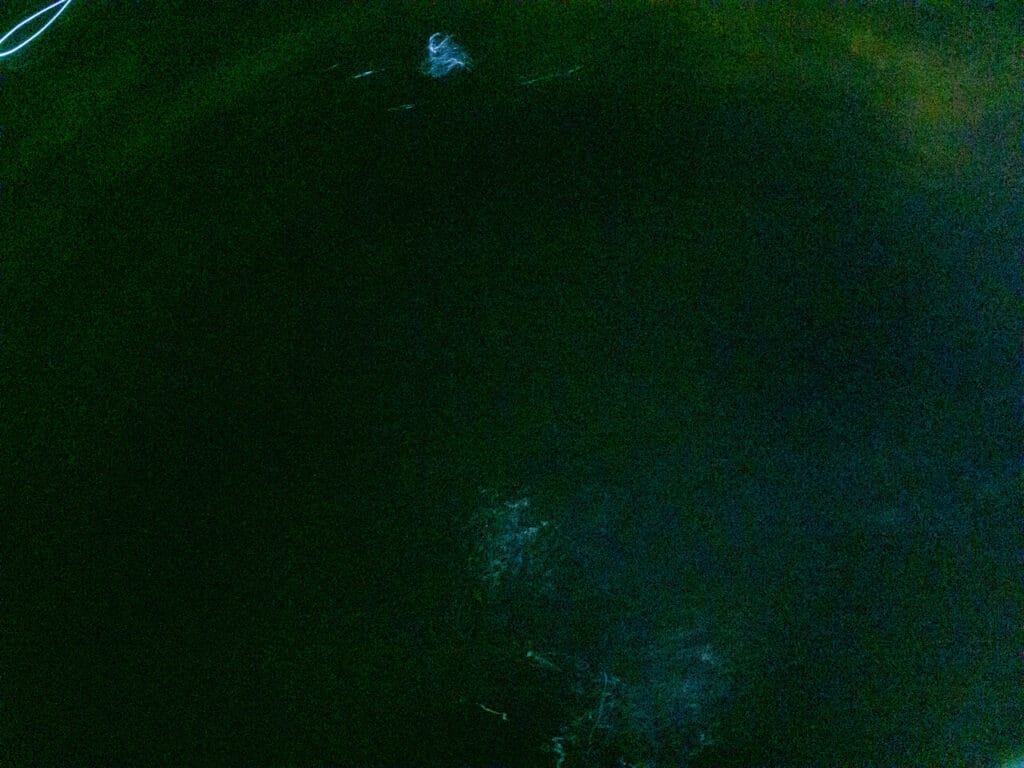
How to incorporate a bioluminescence tour into your Costa Rica itinerary
So this is the fun and tricky part. Neither Paquera Bay or Golfo Dulce are particularly high traffic areas.
Golfo Dulce
Golfo Dulce is easy if you’re heading down to the Osa Peninsula anyway. We did not make it this far south along the Pacific coast (but hope to come back one day). But Puerto Jimenez (the Osa Peninsula “outpost”) is only about a 3 hour drive south from Manuel Antonio, and 2 hours away from Uvita. Most travellers are true nature enthusiasts and come down this way to visit Corcovado National Park and Canon Island reserve.
Paquera Bay
Paquera Bay is a little more accessible to the “average” traveller visiting other popular Costa Rica destinations. It is easily accessed via ferry across the Nicoya Gulf from Puntarenas direct to Paquera (1 hour, plan for 1.5 hours to load/unload cars). Puntarenas is a 2.5 hour drive up from Manuel Antonio, and 1.5 hours from Monteverde. Puntarenas is quite literally *on the way* between Manuel Antonio and Monteverde, or even Manuel Antonio and Arenal. The ferry operates 24hr/day, so you could even catch a late night ferry back to your original destination once the tour is over. (We are getting too old for those late night drives, and the kids are too young, so we stayed a few days in Tambor to enjoy beach life. Tambor is about 30 minutes away, and Montezuma is about 1 hour away.)
You can even visit Paquera Bay if you are staying in the Guanacaste area. From places like Tamarindo and Samara, Paquera is about 2.5 hours away.
Can you do a bioluminescence tour with kids?
You *CAN* do bioluminescence tours with kids and even young kids, but the question is whether you would want to. Bioluminescence tours are perfect for families with elementary-age kids or teenagers. Big and Lil S were 8 and 6 at the time, and just at the age where they are fascinated by how nature works. (They are also the age where they are starting to get FOMO – you tell them something is rare or once-in-a-lifetime and they are all over it.) The tour we went on with Bahia Rica had a “recommended” age limit of 10 years. Those with younger kids can email them, and arrange for a “family tour”, or go on the regular tour if you don’t have any concerns about their ability to sit in a kayak. (Kids go with parents in double kayaks.)
Babies, toddlers, and pre-schoolers likely won’t be able to appreciate the bioluminescence or the time it takes to find it. If parents want to do the tour, you won’t be able to kayak, but you can still take the boat tours even with younger kids.
Bioluminescence tour options in Paquera Bay
There are not that many bioluminescence tours in the area. The 3 main companies that offer tours are: Bahia Rica Adventures, Eddy Bioluminescence, and El Gecko .
Bahia Rica
A small tour company that offers kayak tours and sports fishing tours, started by a Norwegian couple in 2007. The husband has a marine biologist background and both are passionate about boating and fishing. We went with this company because they seemed a little bigger and more established, and we felt safer going with the kids. They do not offer bioluminescence tours by boat. Bahia Rica does offer airBNB-style rooms, but you do need to stay 2 days minimum.
- Cost: $36 USD pp, children under 10 are half price
- Duration 1.5 hours
Eddy Bioluminescence
Eddy Bioluminescence is a relatively new tour operator run by Eddy, a Paquera native. He was raised as a fisherman and was previously a surfing instructor. Of course, we have no personal experience, but he has excellent reviews online as being engaging, personable, and knowledgeable about the area. Eddy does offer boat tours if you do not want to kayak. It is located right beside Bahia Rica.
- Cost: $35 USD pp
- Duration 1.5 hours
El Gecko
El Gecko is also run by a Paquera native, Juan. The company offers bioluminescence kayak and boat tours that are 2 hours, but the reviews are a little more mixed. There were concerns they did not have guides that spoke English.
- Cost: $40-50 USD pp (may have special offers available)
- Duration 2 hours
What to bring on a bioluminescence tour
- swimwear or clothes that can get wet – you do get a chance to get out of the kayak and splash around in the water
- water shoes
- a travel towel to dry off afterward
- your phone in a waterproof pouch for photos/videos, or GoPro (but as we’ll get to below, the GoPro does not work as well)
- bug spray
Our bioluminescence tour experience
We’d arrived at our resort in Tambor early in the afternoon (a 3.5 hour drive from Monteverde, we did not take the ferry on our way in). The kids were having a ton of fun at the beach and enjoying mocktails and didn’t really want to leave, but were enticed by the prospect of kayaking in the dark. The tour started at 6pm (may vary between 6pm – 7:30pm depending on the season). We arrived just in time to catch a stunning sunset – one of the best we saw in Costa Rica!
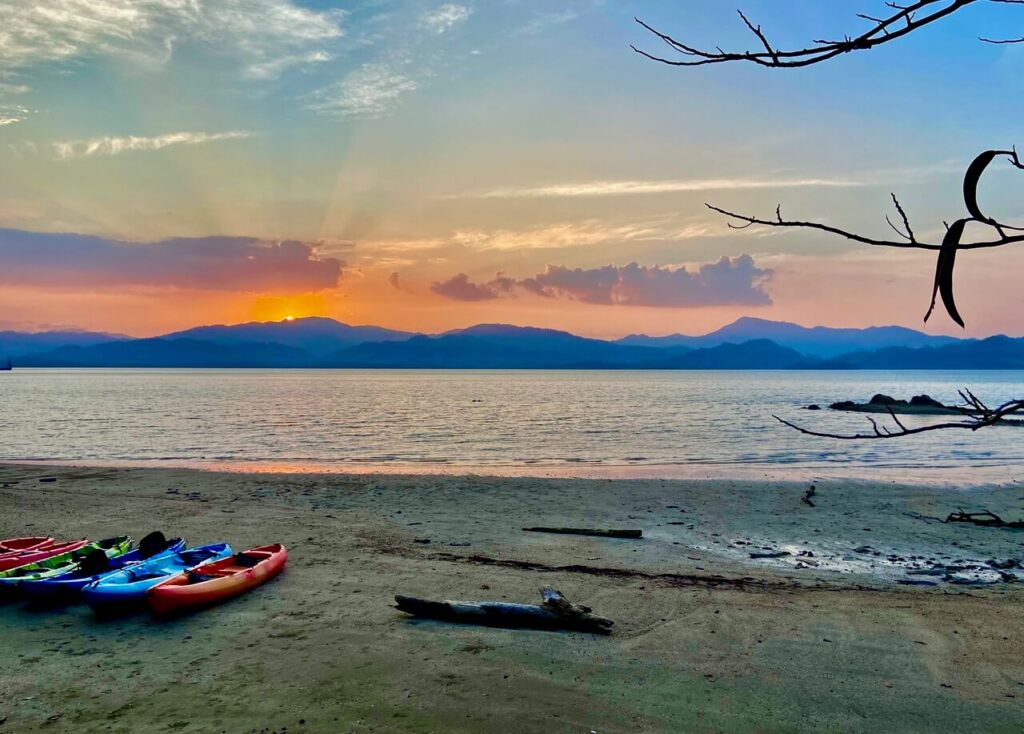
The hosts offered drinks and snacks while we waited, which the kids overindulged, and hammocks to enjoy the view. We had a small orientation, where we learned all about bioluminescence. There were around 10 people on the tour (2 people that we had actually met on a tour in Tortuguero on the opposite side of Costa Rica!) We were divided into 2 groups with 1 guide each. Both guides spoke Spanish and English. They provide life jackets. Most people double-kayaked, but you can request a single kayak in advance if you want to kayak alone. Our kids were the only kids there, but they did not require any special treatment.
Our tour was only 2 days out from the full-moon “blackout” period, so the moonlight was pretty bright. However, we just had to kayak about 10 minutes out and away from the shore lights before we started seeing bioluminescence as our paddles splashed in the water. We hit two patches of bioluminescence on our tour. At the second patch, there was a small beach we could get out and wade in. You could even see the sparkles on your skin if you splashed water on yourself. It was *very* cool. We did not see the classic glow with each wave, but we felt lucky that we got to see it at all.
The tour was just long enough for the kids. They were already starting to goof off on the beach, and any longer and they would have gotten bored.
How to take photos of bioluminescence
Capturing bioluminescence is tricky, especially from a kayak. The best way to do this is probably with your phone on the low light setting. We had someone on our tour get a pretty good video of the blue sparkles with each paddle splash on her phone.
We did not have a waterproof case so did not bring our phone, and it was almost impossible to capture the bioluminescence with the GoPro. Even set manually, we could not decrease our shutter speed bobbing around in a kayak without the entire thing becoming a complete blur.
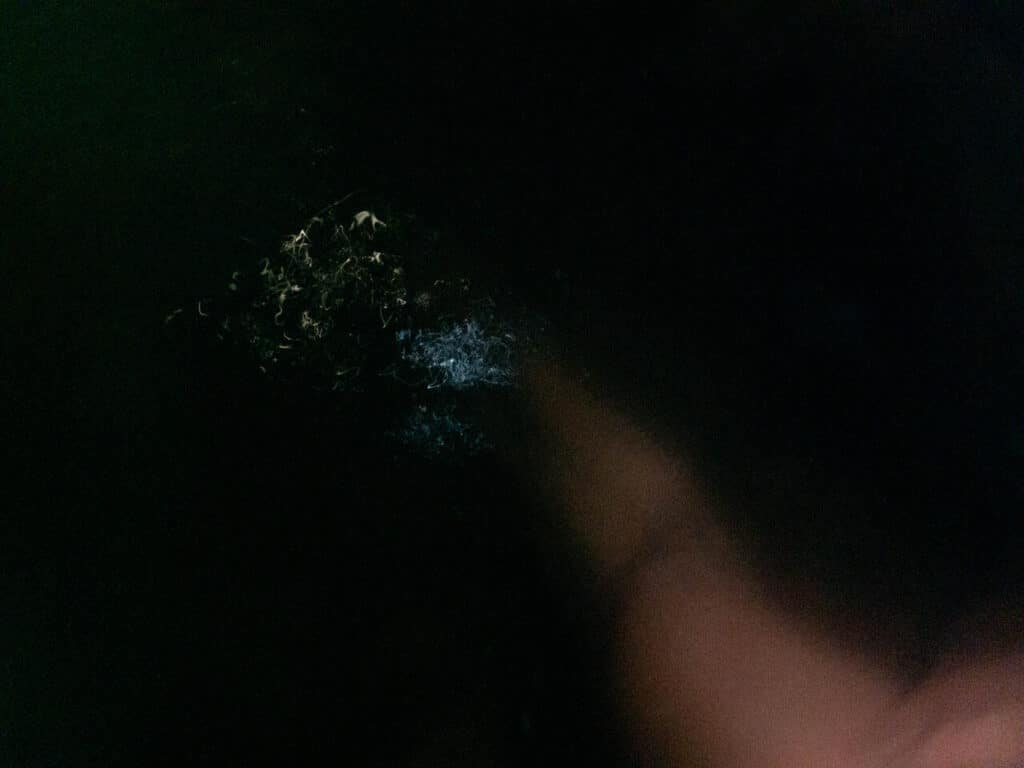
If you truly want to capture bioluminescence, it would be best to bring your dSLR and take a boat as opposed to a kayak. Blow the aperture wide open, dial up the ISO, and set the shutter speed to as long as you can!
With that being said, remember to enjoy the experience – even if you don’t capture the bioluminescence, it’s still a once-in-a-lifetime memory!


